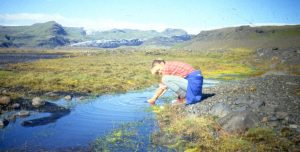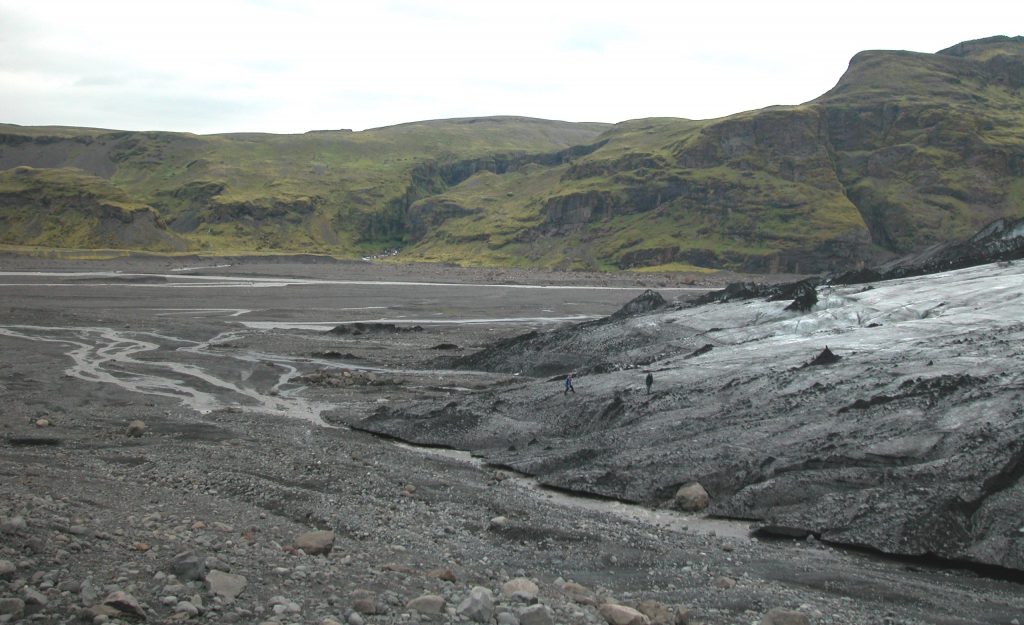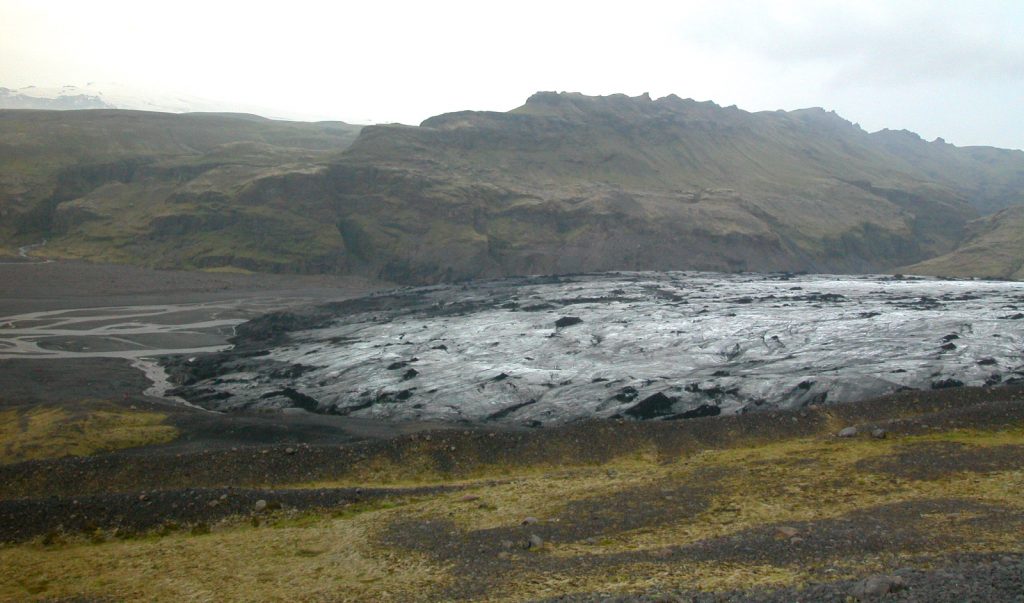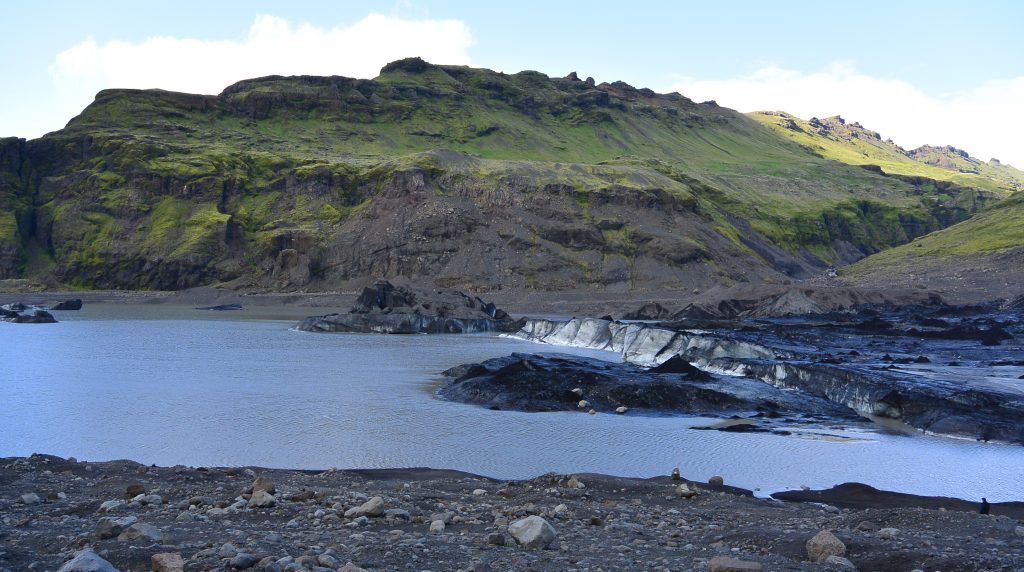
Washing up in a stream at Sólheimajökull whilst doing PhD fieldwork in 1989 (image: Fiona Tweed)
I first came to Iceland in 1989 as a PhD student on a tight fieldwork budget doing very specific physical geography fieldwork at Sólheimajökull, an outlet glacier of the Mýrdalsjökull ice cap in the south of the island. I still remember the thrill of getting close to the ice for the first time, walking on it and camping by it for weeks on end to undertake my field research. Since 1989, I have returned to Iceland over 25 times as part of a number of different research projects, field trips and excursions, each visit welding me even more closely to somewhere I regard as a second home. Over the course of the last 27 years (over half my lifespan!), Iceland has changed radically. During the last decade in particular, I’ve noticed the expansion of coach tours, adventure holidays, new infrastructure and the dramatic increase in the numbers of people visiting this windswept geological showcase in the mid-Atlantic. Returning to my PhD field site as part of this landscape research, we can view it as a microcosm of change.
The two-lane tarmacked road to Sólheimajökull, which I first drove up last year, is a stark reminder of how much has changed. There are two car parks, a café constructed from shipping containers, several picnic tables and a way-marked trail to the ice front. I cast back to arriving here in the late 1980s and early 1990s, walking up a gravel track and camping behind a moraine. There was no visible infrastructure and no defined route to the ice. Few people visited, even though the glacier front or ‘snout’ was so clearly visible from the main road. However, the greatest transformations for me as a glacial geomorphologist are recorded by the physical landscape; the ice retreat here is phenomenal and has been documented by many – including James Balog in his film Chasing Ice and as part of the Extreme Ice Survey project: http://extremeicesurvey.org/

Staffordshire University Geography students working on the ice, 2003 (image: Fiona Tweed)
In trying to explain this to my companions, the magnitude of the changes becomes even more apparent, along with the implications for the landscape research in which we are engaged. The ice has been retreating since the late 1990s; any frequent visitor would notice that the walk to the glacier snout has become longer each year. I estimate that the frontal position is now at least 1.5km away from where it was in the late 1990s. But it is the thinning of the ice which appears most profound to me, with bare rock slopes on the valley walls marking where the glacier once sat. The glacier snout is being effectively drowned by the meltwater that it produces; a lake has been forming for the past few years and now separates the ice from the outwash plain in front of it. All of this means that the landscape view has changed – and this is happening at other locations across Iceland.

Sólheimajökull ice margin, 2004 (image: Fiona Tweed)

Sólheimajökull ice margin and proglacial lake, 2014 (image: Fiona Tweed
How do I feel about the changes? Saddened by the pace of ice retreat and resigned to the inevitable encroachment that tourism brings. But I’ve been privileged to work at this glacier over many years and my intimate relationship with Iceland germinated here; coming back is like visiting an old friend.

Sólheimajökull, June 2016, holding an image from 2007 for comparison (image: Fiona Tweed)

